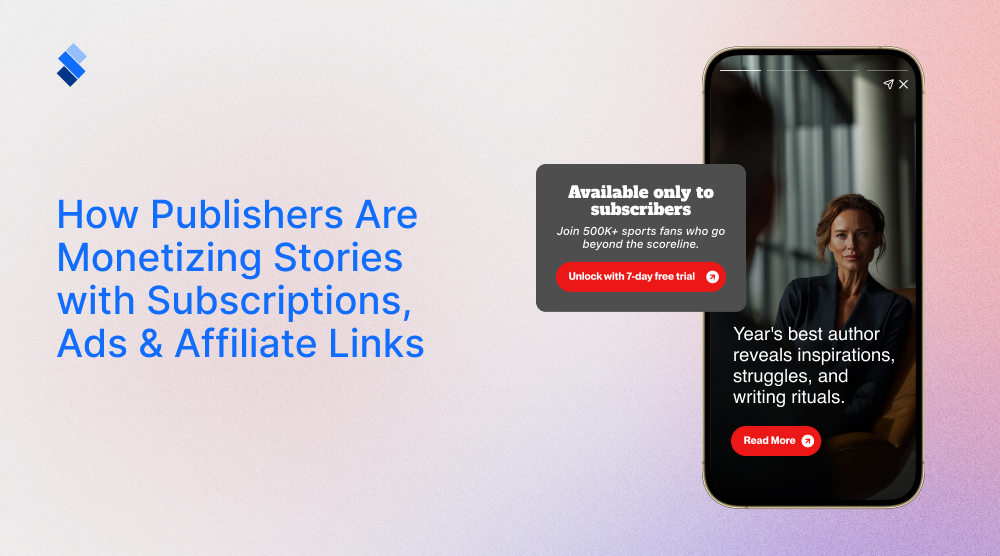The Ultimate Guide to Monitoring Performance in News Portals
In this article we will not only cover monitoring performance in news portals but also outline the best tools for it.

It is a well-understood rule that, for you to grow your news portal, you need to actively monitor its performance. Only by doing so will you be able to make timely adjustments and gain the most out of your content. Unfortunately, few news portals know how to set up their analytic tools to properly track their performance. Fewer yet know how to properly interpret the results and orient their efforts. Well, to ensure that you aren't one of those, let's outline in necessary detail what monitoring performance in news portals is all about.
What you need to pay attention to
Let's first outline the key aspects that a news portal manager should pay attention to. With experience, you can look to add others and more specific aspects to keep track of depending on your audience. But, for starters, these should be quite enough.
Content quality and relevance
The duty of a publisher, both professional and ethical, is to publish truth. While it is never possible to completely know whether something is true or not, it is up to the publisher to keep their content at a certain standard. The role of journalist in the modern day and age is to ensure that their published content is well-researched, fact-checked, and credible. Misinformation can damage your reputation, which once damaged is pretty much irreparable.

Secondly, you need to tailor content to the interests and needs of your target audience. It doesn't matter if your content is true or not no one is willing to read it. So, you need to pay close attention to ongoing news trends and regularly update with timely news that matters to your readers. While your viewers may want your view on a specific topic, they will want it in a timely manner. This makes it sometimes difficult to properly check the credibility of information, as the pressure of putting out content can be substantial. This balancing act between publishing fast and doing the due diligence can be difficult for publishers to maintain. But, alas, it is something you must get the grips of.
Tools to consider for content credibility
Unfortunately, there is no one-for-all tool for fact-checking. If you wish to verify the information you receive it is best that you compare it with various news sources, and see which makes the most sense. The tools available for this tend to be geared towards a certain topic. So, if you are a publisher that primarily discusses politics, you might use PolitiFact. If you are more focused on social media, you might find better use out of AFP Fact Check. And if you cover a wider range of topics, you can try Snopes. All in all, it is best to try different tools until you find the one that helps you maintain the difficult balancing act we've discussed.
User Engagement
Once you've squared away the issue of content, you need to track your users. While some choose to simply look at their revenue at the end of the month, we would advise against it. There is not much to learn about your audience if you simply publish content and hope for the best. Instead, you need to pay attention to how readers engage with your content. Their comments, shares, likes, and time spent on articles are all valuable sources of insight. Through these, you can better understand what resonates with your audience and how to best reach them.
By knowing this, you can also work towards building a sense of community. The more you encourage reader feedback and then respond to their feedback, the more they will feel that their opinions matter. Even more so when you clearly validate their good points. Engaged users are far more likely to become loyal readers.
Tools to consider for user engagement
Now, there are a couple of tools you can consider for monitoring and improving user engagement. The first we would recommend is Qualaroo. You can add Qualaroo to your site to collect user feedback through targeted surveys. That way you will have first-hand information on how your customers perceive your content. Customize questions to gather insights on user experience and satisfaction. Its key features include on-site surveys, NPS tracking, and user segmentation.
If, on the other hand, you primarily use social media to interact with your users, you might want to rely on Agorepulse. This tool makes managing comments and mentions much easier as it puts them all in an easy-to-navigate platform.
SEO
In order for viewers to engage with your content, they first need to be able to find you. And the only way to make that possible is by tackling SEO with due care. Now, designing a full-fledged SEO strategy can be a cumbersome endeavor, which is why we've covered it in a different article. Just know that you will have to learn how to optimize content for search engines to ensure your articles are discoverable. This includes keyword optimization, meta descriptions, and internal linking. You also need to ensure that your content is easily shareable on social media and via email to extend its reach.

Tools to consider for SEO managment
Ahrefs and SEMrush are both quite comprehensive SEO suits. With them, you get a wide range of SEO tools like keyword research, backlink analysis, site audits, and content gap analysis. If you wish to focus more on a specific aspect of your SEO there are other options available. But, before you do so, you best master these tools as they will be the ones you most rely on.
Audience growth
If you are serious about growing your audience you will have to take extra measures to understand where they are coming from. Organic search, social media, direct visits, referrals... These are all different channels. And in most cases, one will bring you far more audience than the others. So, it is in your best interest to identify the highest-grossing channel and focus your resources on it. The only way to do that is through long-term tracking.

Tools to consider for audience growth
While there are a few tools to consider here, Google Analytics is a clear number one choice. Through it, you get a comprehensive overview of website traffic and audience behavior across various channels. This not only helps out with your SEO but also allows you to track user interactions across different channels and measure their contribution to audience growth.
Revenue streams
We've already discussed the various monetization tactics available for publishers, and how important it is to choose the right tone. Therefore, we will assume that you have a basic idea of how you will make money from your content. Once you have set up your revenue stream (or streams), you will have to monitor them. This can include adverts, subscriptions, and affiliate marketing.
Tools to consider for revenue streams
If your main source of income is ads, you will likely use Google AdSense. If you opt to expand on your ads, you can look to make use of Google Ad Manager. Both are tools used to monitor, ad performance and collect data on clicks, impressions, earnings, etc. The main difference is that Google Ad Manager is somewhat more complex.

For subscriptions, we would recommend Stripe. It is great for churn analysis and for more detailed revenue analytics. Plus it supports multiple currencies and payment methods, enhancing the global reach and ensuring secure transactions, which is critical for maintaining subscriber trust. In the case of affiliate marketing, you can check out Impact. It provides robust tracking of affiliate clicks, conversions, and commissions. Plus, you get detailed insights into which affiliates are driving the most revenue and which campaigns are performing best.
Competitor analysis
There is no publisher out there that doesn't have to monitor their competition and learn from their mistakes. Therefore, you'd be smart to learn how to do so from the start and help build your publishing brand with ease. Ideally, you will regularly compare your performance against competitors to understand where you excel and where there’s room for improvement. Furthermore, you will observe competitor content to identify trends, gaps, and opportunities. Luckily, there are tools that can help you in both of these regards.
Tools to consider for competitor analysis
SEMrush is an easy recommend, if there ever was one. It provides in-depth insights into competitors' SEO, content strategies, and advertising efforts. Furthermore, it offers detailed information on competitors' traffic sources, keywords, and backlink profiles. With that information at hand, you can look to compare your site's performance against competitors in terms of organic search, paid search, and display advertising. Another option is Ahrefs, which specializes more in backlink analytics. But we would recommend that you first try SEMrush, and only look for alternatives if it doesn't suit your needs.
How to start monitoring performance in news portals
Ideally, you would tackle all these aspects at the same time. But, unfortunately, this is seldom possible. If you are new to publishing, your time will like be cramped with all the minor and major issues. So, we will list the aspects we've mentioned in the order of relevance:
- Content quality and relevance - building a reputation as a trustworthy, well-informed publisher is something you need to tackle from the very start. You shouldn't look to build your brand until you have a firm grasp on how to maintain a quality standard in your content.
- Competitor analysis - Competitors get things right and competitors make mistakes. If you to capitalize on their rights and avoid their mistakes, you best study what they've done and why. Doing so will also make the following steps much easier.
- Revenue streams - You'd be surprised at how important it is to choose the right revenue stream. While you do not have to employ one from the get-go, it is in your best interest to figure it out as soon as possible.
- Audience growth - Growing your audience will be a prerogative, which encompasses different channels. Just like revenue streams, you need to identify the one that brings you the most viewers and value. Only by doing so will you avoid wasting your resources on low-performing plans.
- SEO - SEO management is still a key consideration. While you can delegate it to third-party companies, we would advise that you do it yourself. The knowledge that you will get from SEO management will be invaluable in figuring out who your audience is.
- User Engagement - Lastly, it is important to remember that the time when publishers could simply post interesting content and hope for the best is long gone. Now, you need to have a back-and-forth with your audience in order to grow a sense of community. In the modern age of information overload, having a community is key to seeing your brand survive.
Final thoughts
What we've outlined so far are the basics of monitoring performance in news portals. Once you get a hang of them, you'll be able to broaden your monitoring and encompass different aspects. But, these six should be the cornerstone upon which you will build your brand. And if you need help with creating visually pleasing content and yielding revenue from it, know that StorifyMe is here to help.







